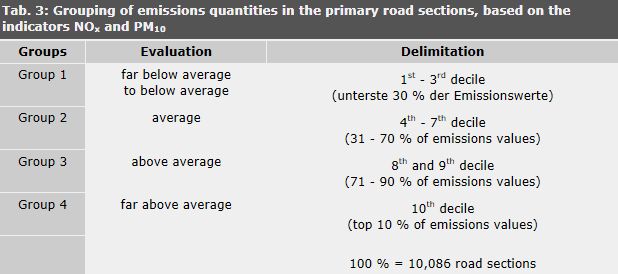The basis for the presentation of motor vehicle traffic emissions was provided by the traffic counts on the primary road network in Berlin carried out in 2014. As described in the chapter “Ascertainment of emissions,” the traffic-related pollutants for the 2014 count network were calculated on this basis.
Evaluation of emissions quantities
The map shows the spatial distribution of traffic-caused emissions. In order to achieve the classification of the emissions quantities, four emissions classes were established, oriented towards the distribution of absolute emissions in Berlin’s primary road network.
To differentiate these classes, the two indicators with a special air-hygienic significance for determination of air quality levels, the pollutants nitrogen oxides (NOx) and particulate matter (PM10), were used. First, groups of 10 percentage ranges (“deciles”) were calculated for each substance separately, on the basis of a sizing of the material and the emission levels per substance and section. In a further step, combined groups were formed for NOx and PM10, respectively.
The assignment of the decile ranges to groups, with evaluations, are shown in Table 3.

